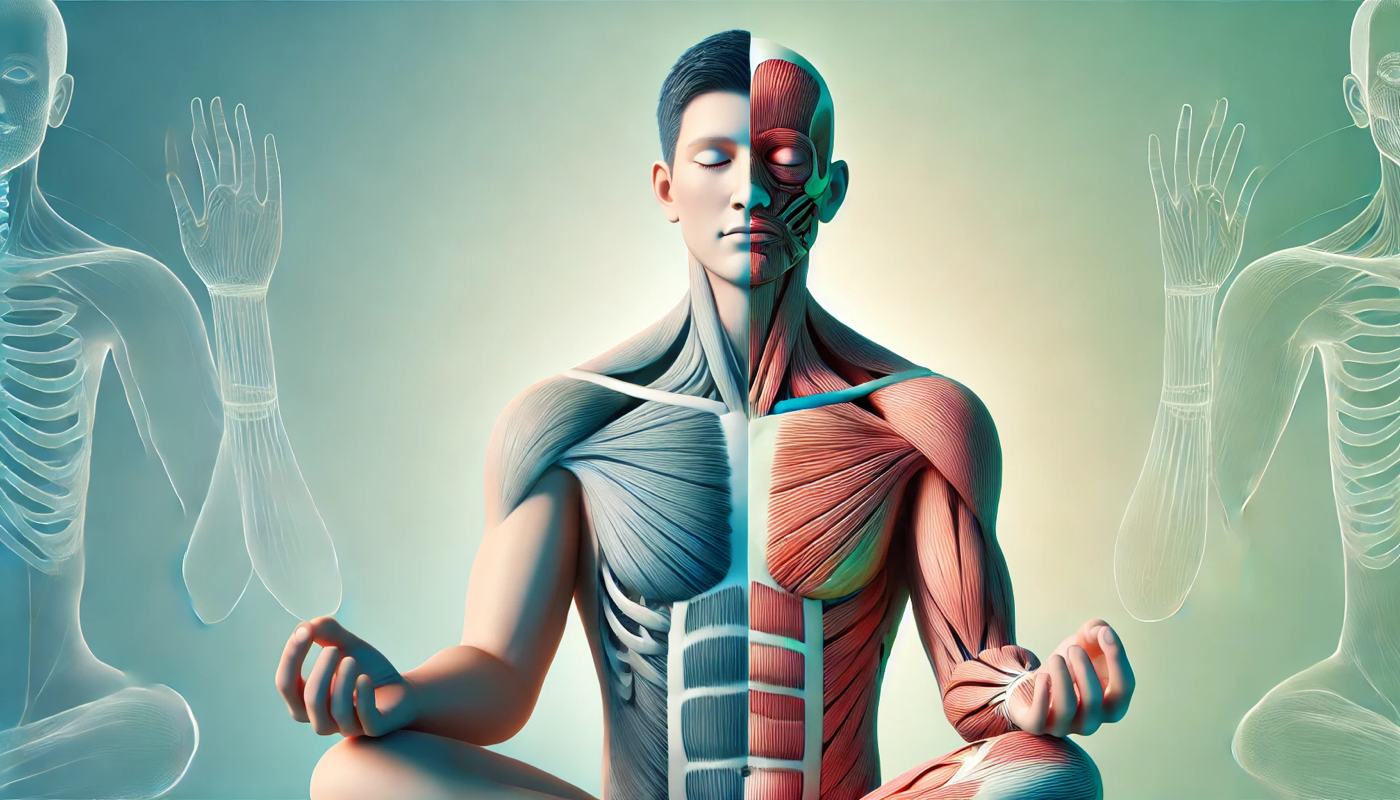Progressive Muscle Relaxation
Progressive Muscle Relaxation (PMR): Step-by-Step Guide to Full-Body Relaxation
Progressive Muscle Relaxation (PMR) is a powerful technique for relieving tension and promoting relaxation by systematically tensing and releasing different muscle groups in your body. This method allows you to become more aware of physical sensations, reduce stress, and achieve a deep sense of calm. Below is an expanded guide to practicing PMR, focusing on each muscle group while maintaining slow, steady breathing.
Preparation for Progressive Muscle Relaxation
1.Find a Quiet Space
Choose a comfortable, quiet location where you won’t be interrupted. Sit in a supportive chair or lie down in a relaxed position.
2.Focus on Breathing
Begin with a few deep, slow breaths to center yourself. Inhale deeply through your nose, allowing your stomach to rise, and exhale slowly through your mouth.
3.Set Your Intention
Commit to focusing on each muscle group fully, leaving the rest of your body relaxed during each step.
Step-by-Step Guide
1. Forehead
•Squeeze the muscles in your forehead by raising your eyebrows as high as possible.
•Hold the tension for 15 seconds, feeling the tightness intensify.
•Slowly release the tension over 30 seconds, feeling your forehead soften completely.
•Notice the contrast between tension and relaxation. Breathe evenly throughout.
2. Jaw
•Clench your jaw tightly, ensuring your lips remain slightly parted to avoid straining other areas.
•Hold for 15 seconds, noticing the tension in your jaw muscles.
•Release the tension gradually over 30 seconds, allowing your jaw to relax completely.
•Feel the ease spreading across your face.
3. Neck and Shoulders
•Raise your shoulders toward your ears, creating tension in your neck and shoulders.
•Hold the tension for 15 seconds, feeling the tightness build.
•Slowly lower your shoulders and release the tension over 30 seconds, visualizing the stress melting away.
•Let your neck and shoulders feel light and loose.
4. Arms and Hands
•Clench both hands into fists and pull them toward your chest, tightening your arms as well.
•Hold for 15 seconds, feeling the muscles in your hands, forearms, and upper arms tense.
•Release the tension slowly over 30 seconds, letting your hands open and your arms rest naturally.
•Notice the warmth and relaxation spreading through your limbs.
5. Buttocks
•Tighten your buttocks muscles as much as possible.
•Hold the tension for 15 seconds, feeling the pressure in your lower body.
•Slowly release the tension over 30 seconds, visualizing the tension melting into the ground.
•Let your hips and lower back feel supported and relaxed.
6. Legs
•Tense the muscles in your thighs (quadriceps) and calves by straightening your legs and pointing your toes upward.
•Hold the tension for 15 seconds, feeling the tightness in your legs.
•Gradually release the tension over 30 seconds, letting your legs sink into the surface beneath you.
•Feel the heaviness and relaxation spreading throughout your legs.
7. Feet and Toes
•Curl your toes downward and tighten the muscles in your feet as much as possible.
•Hold the tension for 15 seconds, noticing the pressure in your feet.
•Slowly release the tension over 30 seconds, letting your feet rest naturally.
•Visualize the tension leaving your body completely through your toes.
Final Relaxation
•Once you’ve completed all muscle groups, take a moment to enjoy the sensation of relaxation sweeping through your body.
•Breathe deeply and evenly, allowing your body to feel light and calm.
•If you notice any remaining areas of tension, repeat the process for that specific muscle group.
Tips for an Effective Practice
•Focus on Sensations: Pay attention to how each muscle group feels during both tension and relaxation. This awareness enhances the effectiveness of the exercise.
•Practice Regularly: Incorporate PMR into your routine to build a deeper connection with your body and manage stress more effectively.
•Go at Your Own Pace: Adjust the timing to suit your comfort level, holding tension for shorter or longer durations as needed.
•Pair with Visualization: Imagine stress leaving your body as you release tension, enhancing the calming effects.
Benefits of Progressive Muscle Relaxation
1.Reduces Stress and Anxiety: The deliberate tension and release process signals the body to relax, calming the nervous system.
2.Improves Sleep: Practicing PMR before bedtime can help quiet the mind and prepare the body for restful sleep.
3.Increases Body Awareness: Regular practice helps you recognize and address areas of tension more quickly.
4.Boosts Emotional Regulation: PMR fosters a sense of control over physical and emotional responses to stress.
Progressive Muscle Relaxation is a simple yet powerful technique that can be practiced almost anywhere. By systematically engaging and releasing tension in your muscles, you can achieve a state of deep relaxation and cultivate a stronger mind-body connection. With regular practice, PMR becomes an effective tool for managing stress, improving focus, and enhancing overall well-being.

